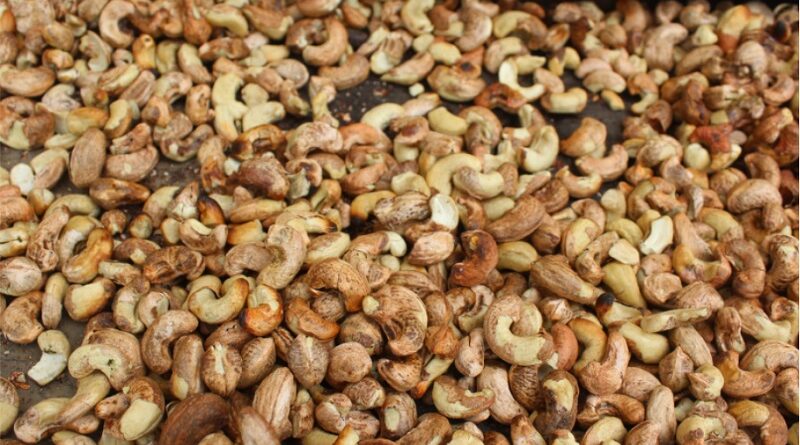Cashew Farming in India – Planting, Growing & Harvesting Tips
Do you know Cashews were introduced in India during the 16th century? The purpose was to meet the afforestation and ensure soil conservation. Just like tea and coffee, cashew today has become a major foreign exchange for the country.
Andhra Pradesh, Karnataka, Goa, Kerala, Orissa, Maharashtra, Tamilnadu and West Bengal are major Indian states where cashew cultivation is massive. Cashew farming is highly suitable and optimal for small and marginal farmers in India. If you wish to start cashew farming in India, here’s your ultimate guide on what factors to consider while sowing, planting and harvesting cashew crops.
Technical Requirements for Cashew Farming
You must consider certain factors to cultivate and grow cashew crops of the highest quality.
-
Soil Requirements for Cashew Farming
The best soil for cashew nuts is deep, sandy, loamy, but well-drained soil. Heavy clay soils with a ph above 8.0 and poor drainage are a high no for cashew cultivation. Water stagnancy and flooding are also unsuitable for cashew farming. Also, soil that is highly saline and alkaline must be avoided.
Moreover, coastal sands and lateritic soil, red sandy loam with a slightly acidic level, is best for cashew growth.
-
Climatic Conditions for Cashew Farming
Being tropical plants, Cashews can thrive well even in the highest temperatures. However, young plants are sensitive and cannot survive frost. Sowing cashew is highly prohibited in altitudes up to 700 above sea level, where the temperature usually stays less than 20°C for a long time.
The cashew crop sustains well in the area where the temperature ranges between 20 to 30°C and annual precipitation marks as 1000 – 2000 mm. However, a temperature above 36°C during the flowering and fruiting stage should be avoided as it can disturb the fruit’s setting & retention.
Cashew crops need a pre-defined dry season of at least 4 months. Heavy rainfall, evenly distributed throughout the year, is highly unsuitable for the crop. Heavy rainfall and humidity can cause fungal diseases or fruit/flowers to drop.
-
Land Preparation for Cashew Cultivation
Removing or burning debris and clearing the space are important when cultivating in forestlands. And if choosing agricultural lands, the lands must be levelled and ploughed well with the best quality equipment.
And if the land is sloppy or even, it is preferable to create bunds or contours. Creating soil dugs or trenches across the contours can help retain water moisture. For this, a good quality tractor with sturdy wheels is highly recommended for preparing the land. If you feel your existing tractor tyres are up for no good, you can replace them with BKT tractor tyre.
Furthermore, note that the cost of land preparation can vary depending on the soil type, levelling method, and equipment you choose. Land preparation should be done and dusted before the arrival of the monsoon, which is between May – June.
-
Planting for Cashew
Grafted plants derived from mother plants are often planted during the onset of the monsoon season. Stakes or shades should be created wherever possible to avoid a mortality rate and have a quicker establishment. And when the monsoon is irregular, one or two-pot irrigation can be done during the initial planting stage.
-
Fertiliser & Manure for Cashew
Cashews can sustain well in limited manure and fertilisers. However, the N:P:K ratio in the soil should be properly maintained. To maintain enough organic matter in the soil, 10-15kg of farmyard manure per plant is highly suitable.
Here is the fertiliser schedule for the first three years:
| Tree Age | Urea (g) | SSP (g) | MOP(g) |
| 1st Year | 375 | 275 | 75 |
| 2nd Year | 750 | 525 | 150 |
| 3rd Year | 1100 | 750 | 200 |
However, the mature cashew tree should have:
- 500 g N (1.1 kg urea)
- 125 g P2O5 (750 g Single)
- Super Phosphate and 125 g K2O (200 g muriate of potash).
-
Harvesting of Cashew Nuts
Cashew plants become fruit-bearing in the 10th year. And for the next 20 years, it will offer full volume and quality production. The ideal time to harvest cashews is between February to May.
The cashew apples are collected during harvesting, and their nuts are sun-dried for the next 2-3 days. The drying process is done until the moisture content is reduced from 25% to 9%.
-
Processing & Marketing of Cashew Nuts
Marketing cashews is not a difficult task. Furthermore, the raw material production costs can be low compared to the cost attached to the processing capacity of existing factories. Raw cashews can be sold at a value of Rs.65-70 per kg within the internal market.
The following steps are involved in the processing of cashews:
- Preliminary cleaning
- Roasting
- Shelling & Separation
- Drying
- Peeling
Frequently Asked Questions for Cashew Cultivation
-
How long do cashews take to grow?
Ans. Once the pollination is done, it takes about 6-8 weeks for fruits to develop. Initially, nuts are developed, and later, apple, which expands within the next 2 weeks. Nuts must be harvested, specifically during the monsoon season. And after harvesting, nuts must be dried before storage.
-
How much is the lifespan of a cashew tree?
Ans. The average lifespan of a cashew tree is 45 years. The crop can provide sustenance to generations of farmers.
-
Is cashew farming profitable in India?
Ans. Cashew costs Rs 70-90/kilo. If you can produce 1600 Kilo/acre, you can expect to earn revenue up to Rs 1,44,000/acre by the 10th year.
-
Which is the leading state for Cashew farming?
Ans. Kerala, with 18.6 %, followed by 33.5 % production, is the leading state for cashew cultivation. The state cultivates 118,000 ha of land and produces 140,000 tons of nuts.
-
Which district is the largest producer of cashews?
Ans. Kannur district, which is situated in Kunnur, is the largest cashew-producing district in India.



